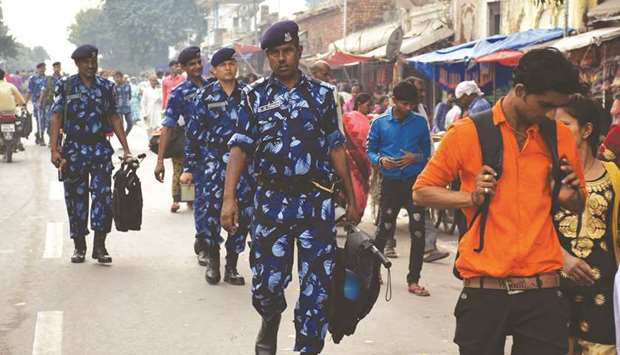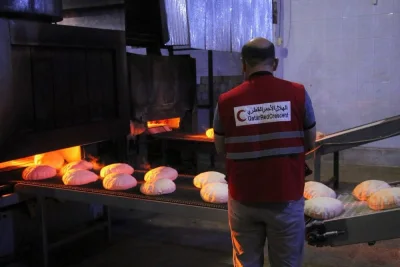Authorities have deployed thousands of additional security forces and roped in about 16,000 “digital volunteers” to sanitise social media of inflammatory posts ahead of a crucial Supreme Court verdict on the Ayodhya dispute.
Hindus and Muslims have for decades been bitterly divided over the 16th-century Babri mosque in Ayodhya in Uttar Pradesh.
Tensions boiled over in 1992 when Hindu zealots destroyed the mosque, sparking religious violence that killed 2,000 people.
India’s top court is expected to hand down its ruling on competing claims to the site’s ownership before Chief Justice Ranjan Gogoi retires on November 17.
“Thousands of (additional) security personnel from different agencies have been deployed in and around Ayodhya. Additional vehicles, CCTV cameras, body cameras and drones too have been brought in,” Ayodhya police senior superintendent Ashish Tiwari said yesterday.
“The police are also making other efforts to ensure that things remain calm. We have enlisted around 16,000 digital volunteers from 1,600 villages in the region to help monitor and flag sensitive content on the social media.”
The monitors will report what they deem is inappropriate content to police, who could then try to track down the posters and demand that they delete their posts or messages.
“We just have to stay alert and sensitive to the security of the visiting pilgrims,” Ayodhya district magistrate Anuj Kumar Jha said.
“We are also keeping a very close watch on social media to ensure there are no rumours or incitement.”
Authorities clamped down on movement and assembly of people in the region last month when the court was concluding its hearing into the dispute.
The district also banned firecrackers and drones, only allowing them to be used if permission is granted.
The authorities have already issued orders to police chiefs in the 34 communally sensitive districts including Meerut, Agra, Aligarh, Rampur, Bareilly, Ferozabad, Kanpur, Lucknow, Saharanpur, Shamli, Muzaffarnagar, Bulandshahr and Azamgarh.
Meanwhile, the All India Muslim Personal Law Board (AIMPLB) has said that a section of media was involved in ‘rabble-rousing and propaganda’ while reporting on the Ayodhya dispute.
In a statement issued here, the AIMPLB said: “A large section of the press, mainly electronic media, is involved in rabble-rousing and propaganda. Such coverage may help in spreading hatred and animosity among the citizens of the country.”
It said a very large section of media has started reporting the Ayodhya case in a manner that violated the basic principle of neutrality in reporting.
The Board urged the media to stick to the advisory issued by the News Broadcasting Standards Association (NBSA) regarding the coverage of the dispute.
“A matter which is pending before the Supreme Court must be reported in the press from a legal point of view without any adjective, personal opinion, prejudice, bias or emotional narrative in the garb of freedom of the press,” the statement said.
The Supreme Court has to decide on the appeals against a key 2010 verdict by the Allahabad High Court which ruled that both groups should split the site, with Hindus granted the lion’s share.

Rapid Action Force (RPF) and Uttar Pradesh police personnel patrol a street in Ayodhya yesterday. Authorities have deployed thousands of additional security forces and roped in about 16,000 u201cdigital volunteersu201d to sanitise social media of inflammatory posts ahead of a crucial Supreme Court verdict on the Ayodhya dispute.


